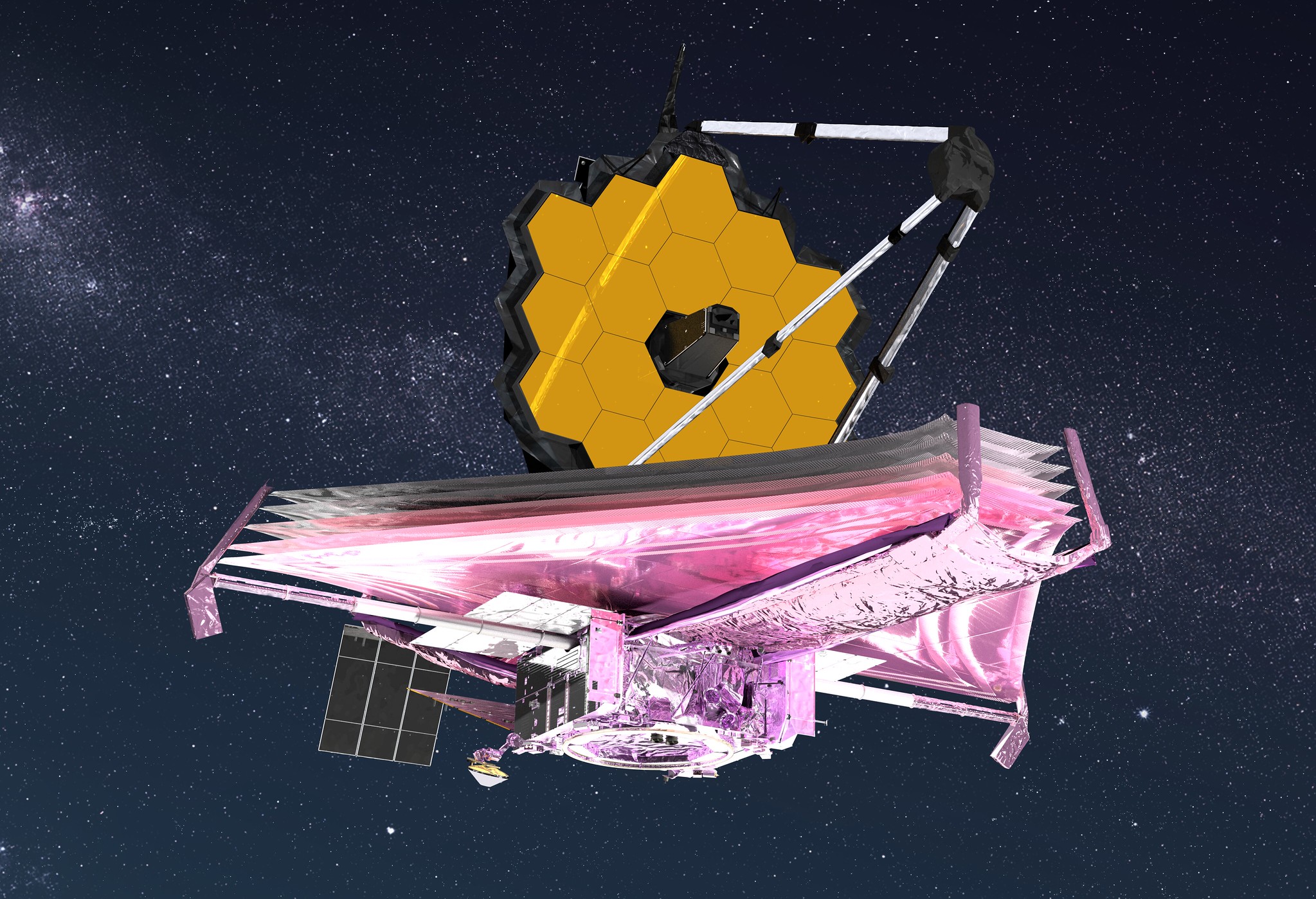What will the James Webb Space Telescope look at first?
"The first images are going to be ugly."

As the James Webb Space Telescope begins the lengthy process of aligning its 18 primary mirror segments, a question burns in the astronomical community: What will the huge observatory look at first?
Webb soared into space successfully on Dec. 25 and successfully completed its major deployments about two weeks later while speeding toward its ultimate destination: the Earth-sun Lagrange Point 2 (L2), a gravitationally stable spot in space about 930,000 miles (1.5 million kilometers) away from our planet.
The telescope includes 18 hexagonal mirror segments that need to be gradually aligned into a single, nearly perfect light-collecting surface. A necessary part of that process is taking images of the sky to see how well the alignment is proceeding, but Jane Rigby, Webb operations project scientist, warned everyone not to expect much from the "first light" of Webb.
"The first images are going to be ugly. It is going to be blurry. We'll [have] 18 of these little images all over the sky," Rigby told reporters during a livestreamed press conference on Saturday (Jan. 8) discussing the successful deployment of Webb's 21.3-foot-wide (6.3 meters) primary mirror that day. Rigby was speaking from NASA's Goddard Space Flight Center in Maryland, where telescope operations are centered.
Live updates: NASA's James Webb Space Telescope mission
Webb team members didn't say during the press conference if they plan to release those early, "ugly" images. The primary mirror segments will at first be off by millimeters, which is a large degree of imprecision when it comes to honing in on a distant exoplanet or seeing the stars in a faraway galaxy.
But by roughly Day 120 of the mission, which is about April 24, engineers expect that the telescope will be seeing far more precisely, with the alignment procedure complete.
Get the Space.com Newsletter
Breaking space news, the latest updates on rocket launches, skywatching events and more!
"I like to think of it as, it's like we have 18 mirrors that are, right now, little prima donnas, all doing their own thing, singing their own tune in whatever key they're in," Rigby said. "We have to make them work like a chorus, and that is a methodical, laborious process."
The next major question is what Webb will first focus its eyes on. The observatory, billed as a successor to the groundbreaking Hubble Space Telescope that launched in 1990, has received many requests for "telescope time" among astronomers, and the vast majority of those had to be turned down. A few "early science" programs are listed on NASA's website, but where Webb will look first has not yet been disclosed.
However, we do know some of the engineering alignment targets that the observatory will examine during early commissioning.
"We have some sources that are [of] nice and uniform brightness," Rigby said, "so we can check how the detectors are working ... A lot of those targets are in the Large Magellanic Cloud, because we can always see the north and south ecliptic poles. They're always available."
Rigby added that the team picked many of the commissioning period targets in the Large Magellanic Cloud, a dwarf galaxy relatively close to the Milky Way, because they would always be in sight no matter when Webb launched. "We knew we didn't have to keep replanning if the launch date changed," she said.
That consistency was, in retrospect, a wise choice, as Webb's launch date was delayed repeatedly in the last few weeks alone due to last-minute issues, including a faulty data cable and an unplanned clamp band release during launch preparations. All issues were successfully resolved before launch.
Follow Elizabeth Howell on Twitter @howellspace. Follow us on Twitter @Spacedotcom and on Facebook.
Join our Space Forums to keep talking space on the latest missions, night sky and more! And if you have a news tip, correction or comment, let us know at: community@space.com.

Elizabeth Howell (she/her), Ph.D., was a staff writer in the spaceflight channel between 2022 and 2024 specializing in Canadian space news. She was contributing writer for Space.com for 10 years from 2012 to 2024. Elizabeth's reporting includes multiple exclusives with the White House, leading world coverage about a lost-and-found space tomato on the International Space Station, witnessing five human spaceflight launches on two continents, flying parabolic, working inside a spacesuit, and participating in a simulated Mars mission. Her latest book, "Why Am I Taller?" (ECW Press, 2022) is co-written with astronaut Dave Williams.









